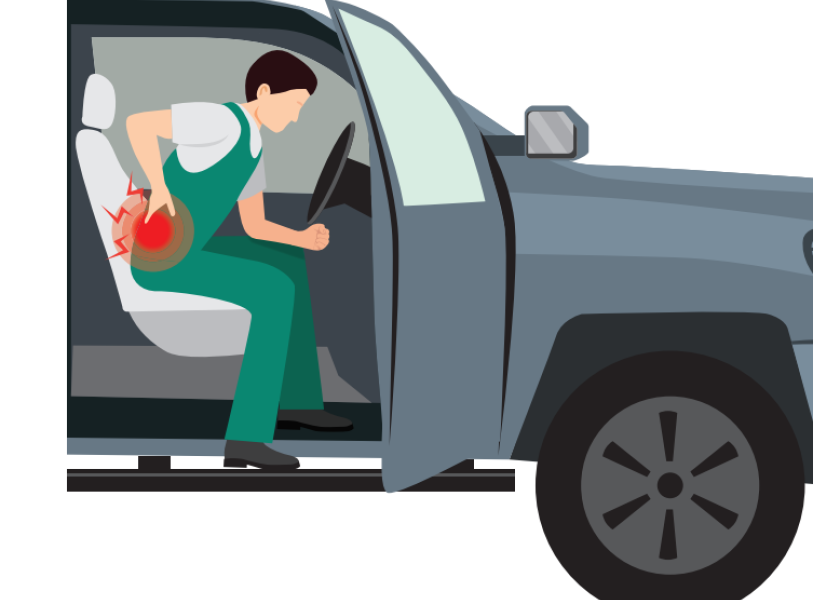When Your Back is out of Whack

The following three scenarios are ones Scott Uhlenhake, physical therapist and orthopedic specialist, has addressed most often with bovine veterinarians over the years. With each scenario, he has I have provided basic information regarding body mechanics and examples of application of these principles.
“I hope you are able to apply that information to the situations in your daily lives both at work and at home,” he says.

1. BOVINE PALPATION HAS BEEN THE PRIMARY CONCERN EXPRESSED BY VETERINARIANS.
Palpation inherently has a risk of significant injury caused directly by the animals. There is also risk associated with the repetitive motion and forces necessary to complete the task on a herd of animals.
Ideally, you should try to maintain a position as close as possible with a line between your shoulders almost perpendicular to the bovine spine. To minimize stress on the shoulder joint used for palpation and a wide variety of adjacent structures, you should minimize elevation of the arm and keep the scapula depressed and retracted while also avoiding rotation away from the inserted arm.
Insertion force should be applied by stepping or lunging forward, not reaching. Optimal techniques will vary depending upon whether you are dealing with freestalls, lockups or rails; however, I feel containment with rails often provides an opportunity for better body mechanics and overall safety.
2. BIRTHING CALVES ALSO POSES SIGNIFICANT RISK FOR INJURY.
The work environment may or may not be modifiable depending upon the farm, the cow or heifer, the urgency of the situation, etc.
Obviously, grip and other hand strength are very important. You have more grip strength with your elbow in a bent position, which goes along with the concept of getting as close as possible to your work. Minimizing grip with the elbow extended also prevents premature fatigue while decreasing stress on the elbow, thereby lessening the risk of tendonitis.
Pulling directly on the calf, on the chains or on the handle of a calving jack, can involve a large amount of force and should be done with caution.
First, you should get as close as possible to anything you are pushing or pulling. Keep your elbows close to your body and try to lock in your arm position. A wide, staggered stance with your legs provides you with good stability and allows you to use the power of your legs, which is more efficient and safe than relying on your arms.
When there is an option, such as with the use of a calving jack, you should push rather than pull. Try to keep an erect posture and engage your core muscles while applying force. Jerking motions significantly increase injury risk and should be avoided.
3. MANY VETERINARIANS SPEND A GOOD PORTION OF SOME OF THEIR DAYS DRIVING. POSTURE IS A BIG DEAL.
If you are in a good posture while driving, this can serve as a recovery period; however, if you are in a poor posture, it will only continue with stresses similar to those experienced while working with the animals.
Prior to entering the vehicle and after exiting the vehicle, you should strongly consider stretching of some type. The most common mistake with driving posture is poor seat position, such as the seat pan being too far away from the steering wheel and/or the backrest being reclined too far.
Each of these mistakes adds to the distance between you and the steering wheel, which requires more reaching. Reaching is often accompanied by a forward-head position, which adds stress to the neck.
Try a seat position that is both closer and more upright but make sure your legs are still in a comfortable position. You could also consider periodically making small adjustments to your seat position during your workday, which will change your body position and potentially ease related stresses.







